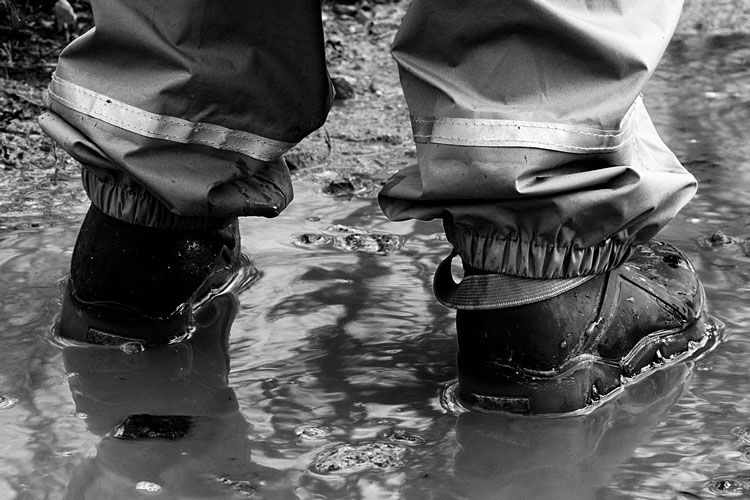In March 2022, citizens of the cantons of Moravia and Goicoechea reported that the water in their homes smelled like fuel. However, Roberto Zoch, mayor of Moravia, indicated that the Costa Rican Institute of Aqueducts and Sewers (AyA) found no presence of hydrocarbons in the water
In August 2023, citizens complained again about the smell of the water and, once more, AyA ruled out the possibility of contamination. Months later, to no one’s surprise, on January 25th 2024 the Ministry of Health confirmed the presence of total hydrocarbons in low concentrations in the communities of Tibás, Moravia, Goicoechea, San José and Montes de Oca.
Alejandro Calderón, systems assistant manager of the Greater Metropolitan Area (GAM) of AyA, commented that they received the analyses that indicate that from the eight samples collected, two reported positive results for hydrocarbons. More than 100,000 residents in these localities could not get water from the pipes for food preparation, personal hygiene activities or to provide tap water for household pets.
The AyA notified that they were following up on the outbreak that generated this situation and that they would continue with the washing of tanks, pipes and other operational maneuvers. They also enabled drinking water distribution routes with tank trucks and recommended that, in the event of symptoms such as skin or throat irritation, stomach problems, nausea, vomiting or difficulty breathing, the population should go to the nearest health service.
Some answers amidst the chaos
The National Association of Public and Private Employees (ANEP) reported that Óscar Ramírez, director of water purification plants of the GAM, knew since January 22nd 2024 about the presence of hydrocarbons in the drinking water and, despite knowing its status, allowed the water to be distributed until January 25th, when the AyA issued the official statement.
Five days later, on January 30th 2024, the Presidential House announced that Juan Manuel Quesada, president of RECOPE, would now be the new executive president of AyA, but to switch from RECOPE to AyA in the midst of this crisis? This change does not seem the most appropriate. Or, on the contrary, it is very convenient.
The University of Costa Rica (UCR) identified that the contaminating hydrocarbon is a mixture of xylenes. Roberto Urcuyo, researcher at the Research Center for Electrochemistry and Chemical Energy (CELEQ) explained how the sampling strategy was defined, the considerations when analyzing a river and the technique used to separate the substances.
The investigation determined that the source of contamination was a surface source located before AyA’s Guadalupe Water Purification Plant, which is fed by three surface water intakes: Quebrada Honda 1, Quebrada Honda 2 and Quebrada La Lupe. Quebrada Honda 2, located in San Jerónimo de Moravia, is one of the AyA’s raw water intakes where the xylenes were found. However, who was responsible?
How can xylene affect humans?
Xylene is a flammable, colorless, sweet-smelling liquid used mainly as a solvent in the rubber and leather industries, and as a cleaning and diluting agent for resins and paints. To a lesser extent, it is also used in the chemical, plastics and synthetic fiber industries as a coating for fabrics and papers.
The International Agency for Research on Cancer (IARC) has determined that there is not enough information to say whether xylene is carcinogenic to humans, but it can cause skin, eye, nose and throat irritation, difficulty breathing, lung damage, stomach discomfort and possible liver and kidney damage. Short-term exposure to high concentrations of xylene may produce effects on the nervous system, such as lack of muscular coordination, confusion and loss of balance.
Illegal use of xylene
On October 27th 2022, a group of officials of the Costa Rican Drug Institute (ICD) requested to reconsider the appointment of Fernando Ramírez as the new director of the ICD due to family ties to a person who was convicted of illicit drug trafficking. However, the new director affirmed that he meets all the requirements to direct the ICD.
So, why on December 8th 2023 did Fernando Ramírez indicated that in order to acquiere or handle list 3 products (where xylene is included), only a sanitary operating permit or veterinary operating certificate is required? Previously, a license or permit was also requested.
Ariel Alfaro, chemical regent of the UCR, clarified that xylene can be used as a solvent in the drug production process (such as cocaine hydrochloride), which justified xylene being a controlled substance, but not anymore. Are these changes related to the water contamination in the country? What else do we not know? What are they not communicating? There is something very cloudy in the water.

